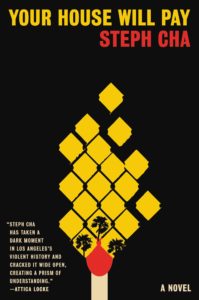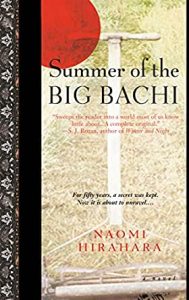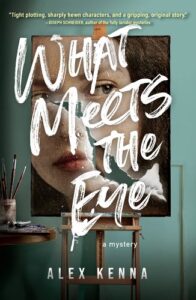When I first moved to LA, I felt like I was in another country – and sometimes another planet. There were red-tiled Spanish mansions, giant Seussian cactuses, and scores of gorgeous, gazelle-like young people. But there was also a dark side. Tent cities just blocks from city hall, downtown streets littered with needles, broken glass, discarded underwear, and ambiguous biological stains.
Then there were the surprises. Chic speakeasies inside subterranean sandwich joints, soulless-seeming strip malls containing the most delicious hole-in-the-walls, tiny 20-seat theaters staffed by brilliant actors with big dreams.
LA is a hard place to put your finger on. It’s a city (and county) filled with contradictions and contrasts. It’s a place where people come to reinvent themselves. Artists hone their craft, scammers find their mark, immigrants search for a piece of the American dream. Obscene wealth next door to people living on the edge.
With all this, it’s not hard to see how LA became a favorite setting for noir fiction. But when we think about noir, we tend to think of the classics, a small pantheon of mostly male writers – James Elroy and Raymond Chandler, or more recently, the always engaging Michael Connelly. Not to be overlooked are the astonishing women writers producing some of today’s best crime writing. To get you started, here is a short list of modern LA noir books by women writers sure to keep you flipping pages well after the lights should be out.

And Now She’s Gone by Rachel Howzell Hall
And Now She’s Gone stars newly-minted PI Grayson Sykes, as she takes on the case of a wealthy doctor’s missing girlfriend, Isabel Lincoln. Both women have complicated pasts, and a host of secrets that reveal themselves as the story progresses. Sykes is much more than a vehicle for storytelling though. She’s a multi-faceted character with a clear voice. Through her, Hall explores themes of identity, trauma, compartmentalizing, and starting over. Hall has an amazing ability to show us the many layers of what Sykes is experiencing in any scene. We know when she’s feeling hungry, or spacey, or horny, or germophobic – sometimes all at once. We see her when she’s in pain from a botched surgery, but still contemplating sleeping with a handsome specimen. We cringe with her when she tries to impress a client, while accurately diagnosing him as a walking microaggression. The detail in her inner monologue makes us feel like we know her, which makes it all the more interesting as her secrets start to reveal themselves. The glamorous Isabel Lincoln is remote, but no less complex, which keeps us engaged in the underlying mystery. While very different, the two women used LA as a canvas on which to construct new identities.

Your House Will Pay by Steph Cha
Steph Cha’s page turner is inspired by the tragic 1991 killing of fifteen-year-old Latasha Harlins, by convenience store owner Soon Ja Du. Cha’s book focuses on the aftermath of a similar, fictionalized crime. Cha introduces Grace Park, a young Korean American woman whose world is shattered when her mother is shot, seemingly at random. It soon comes out that Grace’s mother killed a Black teenager years earlier when she thought he had been shoplifting. The story also focuses on the family of the murdered teen, and the effect of that tragedy on several generations. Your House Will Pay is a fascinating exploration of grief, racism, revenge, and forgiveness.

These Women by Ivy Pochoda
These Women is told in the voices of a several women affected by a vicious killer who targeted sex workers years ago. We hear from the mother of a murdered teen, a police officer, the sole surviving victim, and a young erotic dancer just discovering her keen eye for photography. When more women are killed after a long break in the carnage, all of the protagonists are affected in profound and sometimes deadly ways. The story is loosely inspired by the Grim Sleeper, a murderer who killed and tortured women in the 1980s, took an extended hiatus, and attacked again in 2002.
Far from archetypes, Pochoda’s characters are multifaceted and distinct. She masterfully switches between these very different women, giving us a glimpse of their inner worlds. Among the most compelling is Julianna, the dancer who has an artistic epiphany and discovers that she’s a talented photographer in her own right – albeit one the LA art world has no interest in discovering. Julianna’s chapters capture the ecstasy of being young and creatively gifted. Seeing her come into her own only heightens our fear for her, as she continues dancing to put food on the table while a killer wanders the streets.
These Women paints a vivid picture of LA as a dangerous, violent place, where just trying to make a living can be a deadly undertaking. The story is gut-wrenching, but the book is un-put-downable.

Still Lives by Maria Hummel
The LA in Maria Hummel’s Still Lives has little in common with Pochoda’s dystopian metropolis – aside from its haunting focus on violence against women. The protagonist, Maggie Richter, is an editor at the Rocque, a fictional museum closely based on LA’s Museum of Contemporary Art (MOCA). Hummel’s own experience working at MOCA makes her discussion of the Rocque’s dysfunction, financial troubles, and eccentric characters feel real and lived.
Maggie is good at her job but well aware that she exists on the margins of LA’s elitist art scene – a fact that comes into focus when the Rocque decides to put on a show by Kim Lord, a celebrated painter currently dating Maggie’s ex. For the exhibit, Kim photographed herself in the guise of famous murdered women and made hyper-realistic paintings of the images. When Kim doesn’t show up to her opening, and the police launch an investigation into her disappearance, Maggie becomes unhealthily obsessed with finding out what happened to her. The book is an interesting, slow-burn mystery. It’s also a thoughtful meditation on the commodification of sexualized violence – a hard topic to avoid in the world of mystery writing.

Summer of the Big Bachi by Naomi Hirahara
Naomi Hirahara’s prolific repertoire includes the engaging Mas Arai series, starring a toothless, grizzled Japanese American gardener from Hiroshima. When we first meet Mas, he’s had his share of trouble: still mourning the wife he loved but didn’t fully appreciate, trying to keep his gambling-addicted best friend from self-destructing, and dealing with decades of guilt after surviving the fall of the A-bomb.
Despite his troubles, Mas has worked hard and built a life for himself in the LA suburbs, running his own lawn care business. Then one day, two strangers show up and start asking questions that threaten to reveal long buried secrets. When a body drops and an innocent man is arrested, Mas has to confront his past, connect with an old friend, and help right a wrong that is half a century in the making. In addition to telling an engaging story, Hirahara confronts tragic historical events, and themes of inherited trauma, survivor’s guilt, and intergenerational miscommunication.
***


















